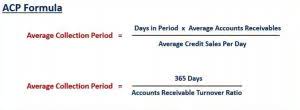
Under the International Financial Reporting Standards (IFRS), LIFO is not permitted. This restriction means that companies operating in countries that adhere to IFRS must use FIFO or other acceptable methods like weighted average cost. This can create challenges for multinational corporations that operate in both IFRS and U.S. GAAP environments, as they must reconcile different inventory accounting methods for consolidated financial reporting. The FIFO (First-In, First-Out) method assumes that the oldest inventory items are sold first. This approach Online Accounting aligns closely with the natural flow of goods, especially for perishable items or those with expiration dates.

Examples of LIFO and FIFO

The valuation method that a company uses can vary across different industries. Below are some of the differences between LIFO and FIFO when considering the valuation of inventory and its impact on COGS and profits. Whereas in deflationary conditions, the whole scenario will get reversed due to fall in the general price level, resulting in higher profits and income tax.

International Accounting Standards
- FIFO has advantages and disadvantages compared to other inventory methods.
- Last in/first out (LIFO) and first in/first out (FIFO) are the two most common types of inventory valuation methods used.
- Using the appropriate inventory valuation system can help track real inventory management practices.
- It follows a chronological order, i.e. it first disposes of the item that is placed in the inventory first.
Learn financial statement modeling, DCF, M&A, LBO, Comps and Excel shortcuts. Our popular accounting course is designed for those with no accounting background or those seeking a refresher. Over the course of lifo formula the past six months, you have purchased spools of wire. Our partners cannot pay us to guarantee favorable reviews of their products or services.
FIFO Method Advantages
It is up to the company to decide, though there are parameters based on the accounting method the company uses. In addition, companies often try to match the physical movement of inventory to the inventory method they use. The choice between FIFO and LIFO significantly influences a company’s financial statements, particularly the income statement and balance sheet. When a company uses FIFO, the cost of goods sold (COGS) reflects older, often lower costs, especially in times of inflation. This results in higher gross profits and, consequently, higher net income. The higher net income can be appealing to investors and stakeholders, as it suggests better profitability and operational efficiency.
- Since the first items acquired are also the first ones to be sold, there is effective utilization and management of inventory.
- Managing inventory can help a company control and forecast its earnings.
- Dollar-cost averaging involves averaging the amount a company spent to manufacture or acquire each existing item in the firm’s inventory.
- Assume a company purchased 100 items for $10 each and then purchased 100 more items for $15 each.
- FIFO (First-In, First-Out) and LIFO (Last-In, First-Out) are two primary methods used to value inventory and cost of goods sold.
- To use the weighted average model, one divides the cost of the goods that are available for sale by the number of those units still on the shelf.
- FIFO is also the best fit for businesses like food producers or fashion retailers who hold inventory that is perishable or dependent on trends.
This can be particularly advantageous in industries where prices are volatile or consistently rising. By using the most recent costs to calculate COGS, LIFO can provide a more accurate reflection of current market conditions. However, this often results in higher COGS and lower profits during inflationary periods, as the latest, more expensive inventory is accounted for first. The FIFO method can show inflated earnings due to using older inventory costs against new pricing. On the other hand, LIFO can lower your taxable income by referencing the most recent, higher-cost inventory. As LIFO isn’t accepted under international accounting standards (IFRS), not all companies can use this method.
- FIFO and LIFO are two methods of accounting for inventory purchases, or more specifically, for estimating the value of inventory sold in a given period.
- Most companies that use LIFO inventory valuations need to maintain large inventories, such as retailers and auto dealerships.
- The rate of inflation impacts the size of the tax differential created by FIFO and LIFO.
- Equip yourself with more information on the latest trends in the market, technology, and how your peers are solving their business problems.
- This approach can be particularly beneficial during periods of rapid price increases, helping companies manage their financial resources more effectively.
- In these situations, FIFO provides a more accurate reflection of current costs in your financial statements.
- The choice between FIFO and LIFO significantly influences a company’s financial statements, particularly the income statement and balance sheet.
Why should you not choose LIFO?

In the tables below, we use the inventory of a fictitious beverage producer called ABC Bottling Company to see how the valuation methods can affect the outcome of a company’s financial analysis. The Last-In, First-Out (LIFO) method assumes that the last or moreunit to arrive in inventory is sold first. The older inventory, therefore, is left over at the end of the accounting period. For the 200 loaves sold on Wednesday, the same bakery would assign $1.25 per loaf to COGS, while the remaining $1 https://www.bookstime.com/ loaves would be used to calculate the value of inventory at the end of the period. This makes it easy for business owners to manage their accounting and makes it simple for investors to interpret the financial statements. FIFO is an accepted method under International Financial Reporting Standards.